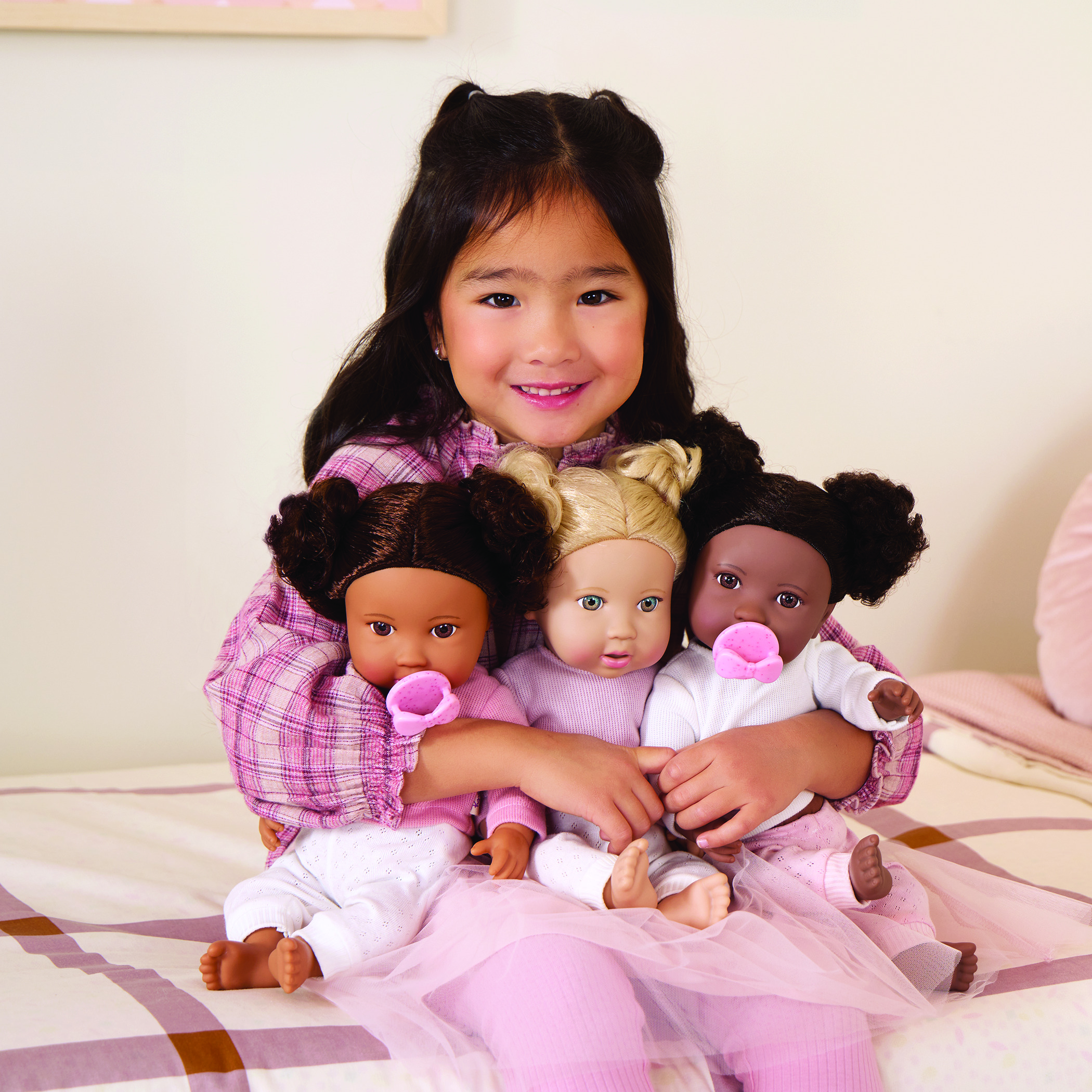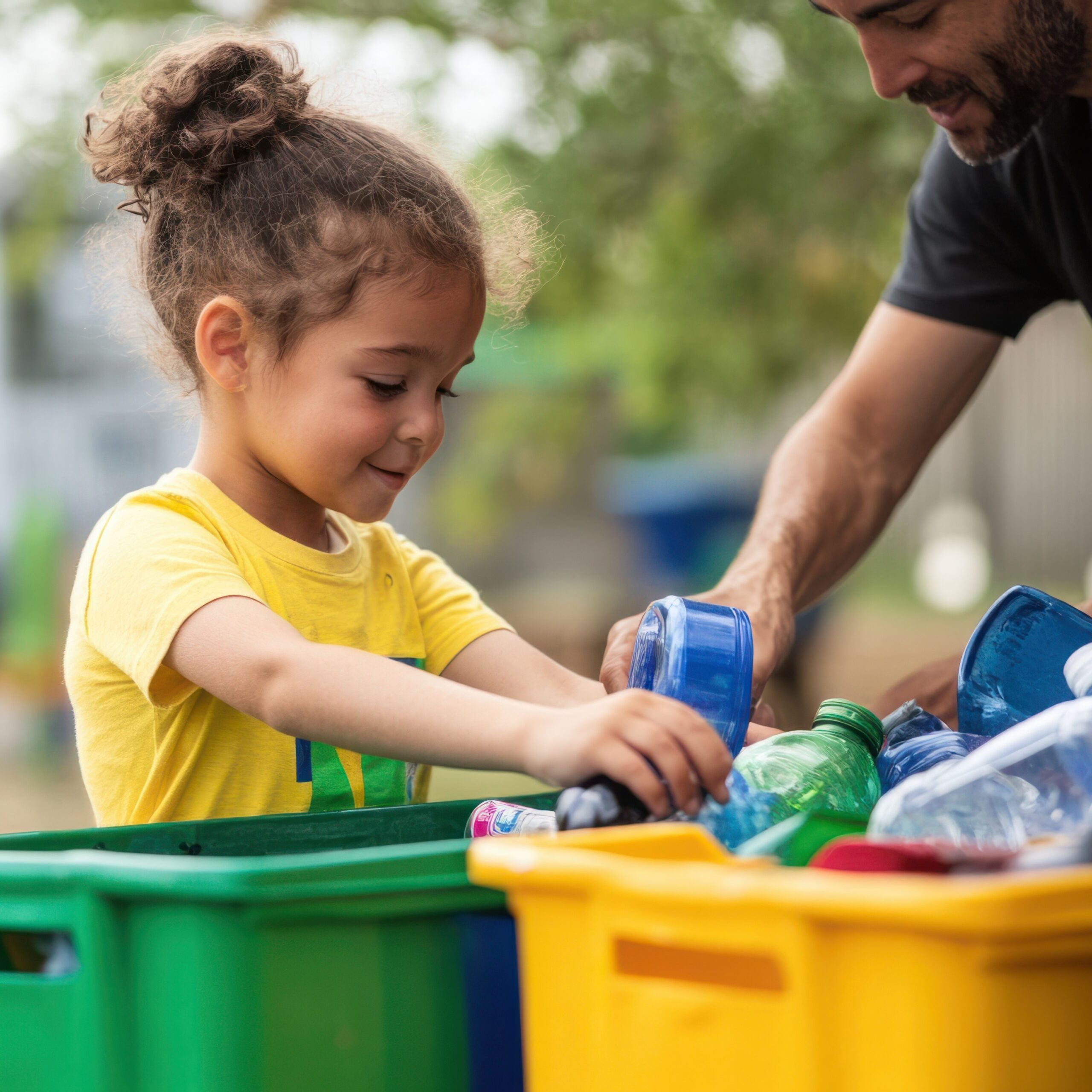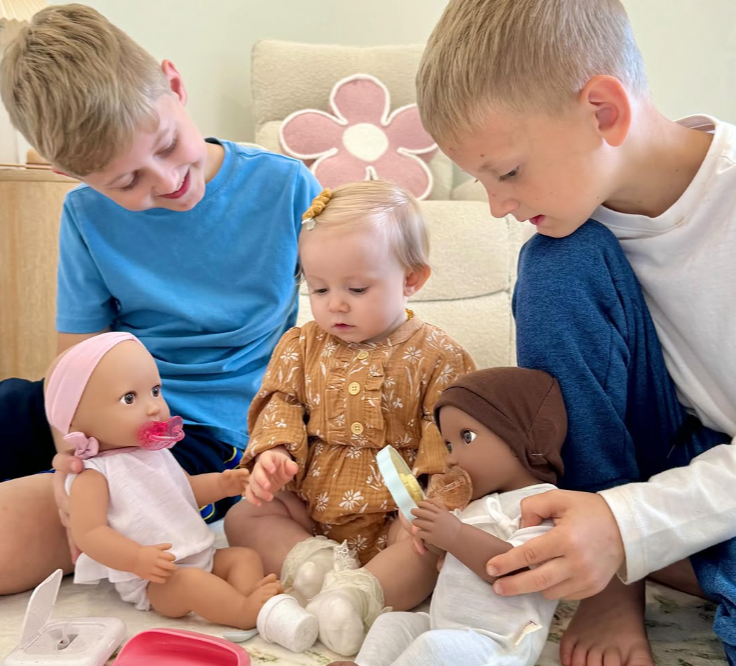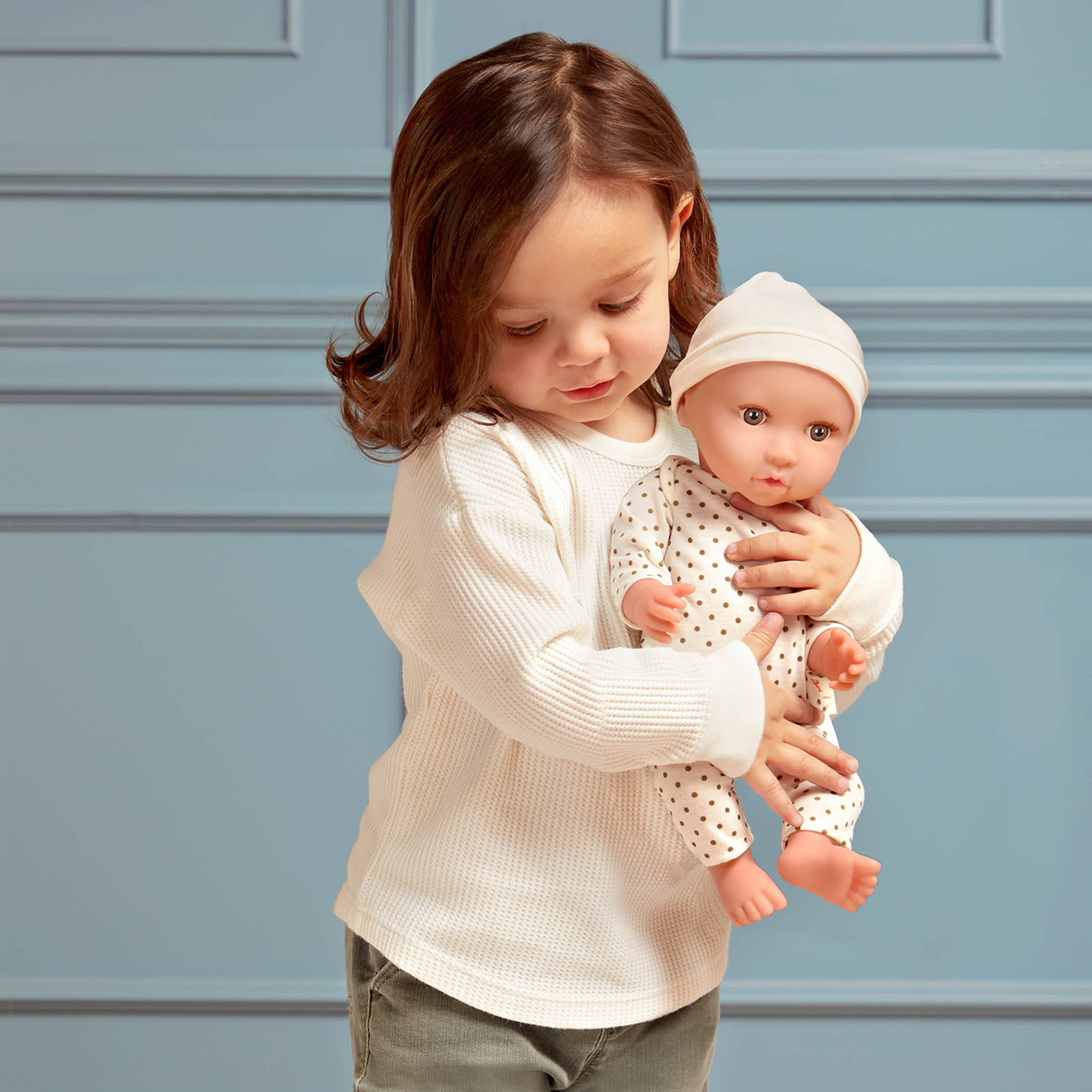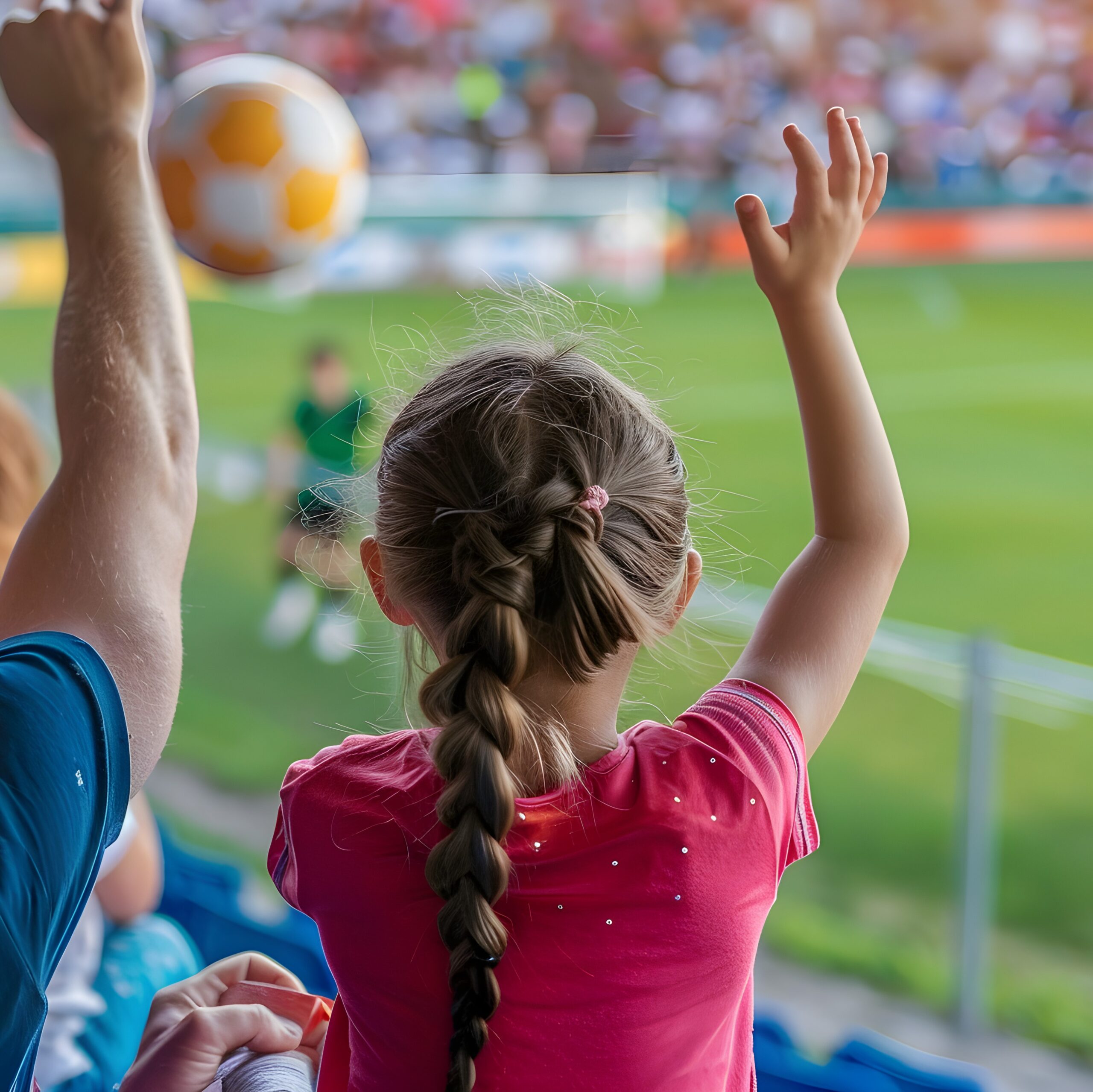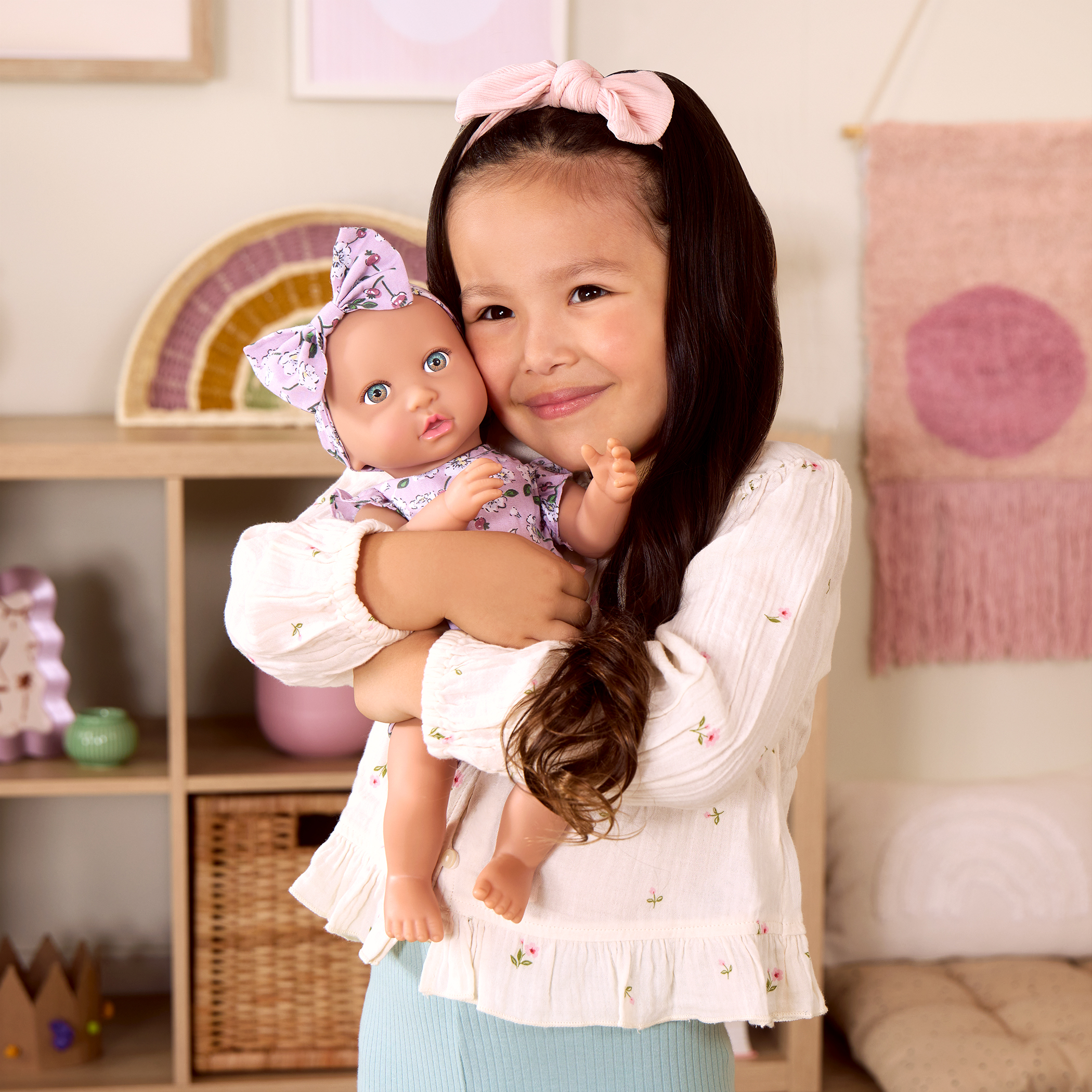
Teaching Kids to Show Kindness Through Play
Every parent hopes their child will grow up kind and compassionate. While so much of a child’s personality is out of a parent’s control, teaching kids kindness is possible. All children can grow up kind; it’s a matter of guiding them toward these ten ingredients of kindness:
- Manners
- Respect
- Helping
- Sharing
- Empathy
- Consideration
- Encouragement
- Patience
- Gratitude
- Forgiveness
Each of these skills and virtues can feel intimidating to teach on their own, let alone compounded as a basis for kindness. Try to look at teaching kids kindness as a series of small, singular actions. For example, if you remind your child to say please, the more you do it, the more likely they are to say please in the future.
5 Ways to Teach Kids to Show Kindness with Baby Dolls
Here are some activities you can do with your child that use the 10 components listed above to help teach kids to show kindness.
Practice Saying Thank You
The first thing your child should do when they receive a new baby doll is say thank you (if they’re old enough to say the words). Tell your child who got the baby doll for them and ask them to thank that person, even if that person is you. As they grow up, everyone who loves and cares for them will feel flattered and proud when they hear your little one say thank you. Those small words go a long way.
Practice saying thank you with dolls they already own at a pretend tea party or picnic. This is a great exercise for sharing, as well. Have your child ask for and give pretend drinks and food, always saying please and thank you to show good manners.
This exercises:
- Manners and gratitude
Ask Your Child for a Favor
Children love to feel important and needed. That means they can struggle with listening when you tell them to do something because they want to be the boss. Whenever possible, meaning when you have the time and don’t mind the mess, ask your child and their doll for small favors.
“Can you or baby doll get mommy’s water bottle from the table?” Because their doll can’t move, they’ll rise to the challenge and show you how capable they are. Give lots of thanks (showcasing all those manners you practiced) even if there are spills. When you turn it into a competition between your child and their doll, they might get more excited to jump into action and help.
This exercises:
- Helping and respect
Take Turns
You can teach kids to share and show kindness in so many ways. We’ve written a separate post with some of our favorite ideas, but the key to sharing lies in patience. Kids don’t have a lot of patience, especially in a world where everything is instant. If kids are fighting over a toy or a baby doll, even if you do nothing, with time, one child will get bored and let it go.
If an older brother or sister is upset that their younger sibling took their toy, remind them they’ll get it back soon. Comfort them while they wait. Console them as they feel sad and left out, but then watch as the younger child lets go of the toy when they no longer find it interesting.
In most cases, this should only take a few minutes. Give the older child lots of praise for waiting and the younger child lots of praise for letting go of the coveted toy.
This exercises:
- Sharing and patience
Say Sorry
Tears are commonplace for kids, and apologies should be as well. Teaching kids to show kindness means saying sorry a lot. Make “sorry” a regular response in your house, even and especially for accidents.
If your child drops their doll, even if the doll can’t feel, encourage them to say sorry. If the doll falls, hug them, ask them how they feel and where it hurts, and tell them you’re sorry for what happened to them. Even if it was an accident.
“I’m sorry you’re sad” is a great way to change the relationship around the word sorry. Sorry isn’t only an apology. It shows empathy and understanding of others’ emotions, no matter who or what caused those feelings.
The more you use the word “sorry” in everyday conversations, the more your child will learn to say it when you or a friend feels sad or hurt. Once your child starts saying sorry authentically, and not just to avoid punishment, this opens the door to forgiveness. When your child says sorry after hurting you, tell them you forgive them. Then show them what accepting their apology looks like (with hugs, smiles, and praise).
This exercises:
- Empathy and forgiveness
Watch Others Play
Depending on the circumstances in your house, watching others play may be difficult. If you have a child old enough for activities like sports or music lessons, their sibling can learn to watch. This teaches your younger child to show kindness by encouraging their sibling’s performances or games.
Watching someone else from the sidelines can be difficult for kids with short attention spans, so that’s where baby dolls become important. Give your child something to hold, play with, and enjoy while they support and watch their sibling.
Tell your child that you and their sibling is so happy to have an audience. Show them that their support makes someone else happy and proud. Cheer, clap, and have them clap baby doll’s hands too. The more fun your child has supporting and encouraging others, the more appreciated they’ll be as a sibling or friend.
This exercises:
- Encouragement and consideration
Encouraging Lifelong Kindness
Every time your child picks up a doll, imagines their needs and emotions and cares for them, they practice kindness. Every time your child expresses kindness with others, you know you’re doing something right as a parent.
Show yourself and your child kindness as often as possible. Teaching kids to show kindness is all about leading by example. Plus, it creates strong positive memories that build character.
For more tips on kindness and compassion, follow LullaBaby on Instagram. Or join the newsletter for all our newest blogs and play ideas.

